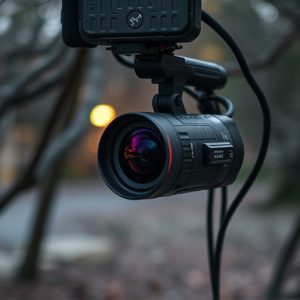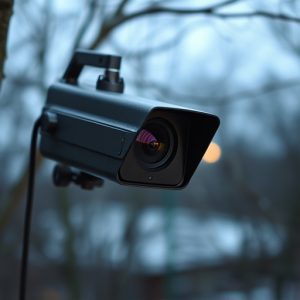Concealed Cameras: Detecting Electromagnetic Signals for Ethical Monitoring
Detecting concealed cameras used for babysitter monitoring relies on understanding electromagnetic (…….
Detecting concealed cameras used for babysitter monitoring relies on understanding electromagnetic (EM) signals emitted by electronic devices, including Wi-Fi, Bluetooth, and lower-frequency radios. Specialized EMF meters can identify unusual signal strengths or bands, helping to uncover hidden cameras in areas like playrooms and kitchens. While monitoring, regularly review footage for patterns and unusual behavior. Ethically, open communication with babysitters fosters trust instead of relying on hidden cameras, respecting privacy rights and legal constraints.
Surveillance device electromagnetic signal detection is a critical aspect of modern security, especially when employing concealed cameras for babysitter monitoring. This comprehensive guide delves into understanding the complex world of electromagnetic signals and their pivotal role in detection. We explore common devices emitting these signals, providing strategic tips for effective surveillance. Additionally, we address ethical considerations and legal aspects surrounding the use of hidden cameras, ensuring responsible and lawful monitoring practices.
- Understanding Electromagnetic Signals and Their Role in Detection
- Identifying Common Devices That Emit Such Signals
- Tips for Effective Surveillance: When and Where to Look
- Ethical Considerations and Legal Aspects of Monitoring with Hidden Cameras
Understanding Electromagnetic Signals and Their Role in Detection
Electromagnetic signals play a pivotal role in the detection of concealed cameras, including those used for babysitter monitoring. These signals are electromagnetic radiations that travel through various mediums, such as air, wire, and even human bodies. Each device, from simple pagers to advanced hidden cameras, emits unique signals that can be detected using specialized equipment. Understanding these signals is crucial in identifying potential surveillance devices, especially those hidden in plain sight.
When it comes to monitoring babysitters or any other domestic help, parents often turn to concealed camera systems for added peace of mind. However, these tiny cameras emit electromagnetic signals that can be picked up by the right tools. By employing signal detection techniques, one can uncover these hidden devices, ensuring privacy and safety. This is particularly important given the prevalence of advanced technology, where even microscopic cameras can transmit data wirelessly, making them hard to detect visually.
Identifying Common Devices That Emit Such Signals
When it comes to detecting electromagnetic signals from surveillance devices, understanding common emitters is key. Concealed cameras, often used for babysitter monitoring or other covert observation purposes, frequently rely on wireless transmission to send video and audio data to remote viewers. These devices can operate on a variety of frequencies, including those used by Wi-Fi networks (2.4 GHz and 5 GHz), Bluetooth devices (2.4 GHz), and even lower frequency radio signals.
Identifying these signals requires the use of specialized equipment like EMF meters capable of detecting a wide range of electromagnetic frequencies. By scanning for anomalies in signal strength or unusual frequency bands, individuals can uncover hidden cameras or other surveillance devices. Additionally, knowing where common placement spots for such devices—like ceiling corners, door frames, and wall junctions—can aid in targeted scanning efforts.
Tips for Effective Surveillance: When and Where to Look
When it comes to effective surveillance, timing and location are key. For instance, if you’re considering Concealed Cameras for Babysitter Monitoring, placing them in strategic areas of your home can significantly enhance security. High-traffic zones like playrooms or kitchen areas are ideal spots as they capture natural movement and interactions. Additionally, ensure devices have line-of-sight to avoid blind spots that could hinder signal detection.
Remember, the goal is not just to have cameras but to use them wisely. Regularly review footage to identify patterns and any unusual behavior, which can help you assess the performance of your surveillance system. This proactive approach allows you to address potential issues promptly and ensure peace of mind, especially when it comes to trusted individuals like babysitters who spend time in your home.
Ethical Considerations and Legal Aspects of Monitoring with Hidden Cameras
The use of concealed cameras, often referred to as hidden cameras, raises significant ethical and legal questions, especially when considered for babysitter monitoring. It is essential to understand that while parents may have legitimate concerns about ensuring their children’s safety while in the care of a babysitter, deploying surveillance devices without consent can infringe upon privacy rights. In many jurisdictions, installing hidden cameras in private residences or areas where individuals reasonably expect privacy is illegal and violates civil liberties.
When considering Concealed Cameras for Babysitter Monitoring, it’s crucial to explore alternative methods that respect both privacy and legal boundaries. Establishing clear communication with the babysitter, creating a safe environment for open dialogue, and promoting trust can be more effective than surveillance. Additionally, ensuring that any cameras used in public spaces or common areas are clearly marked and visible can help maintain transparency and avoid potential legal pitfalls associated with hidden monitoring devices.
In conclusion, understanding electromagnetic signals and their role in detection is paramount when employing concealed cameras for babysitter monitoring. By identifying common devices emitting such signals and utilizing effective surveillance tips, parents can make informed decisions while adhering to ethical considerations and legal aspects. This approach ensures both the safety of children and respects privacy rights, making it a responsible way to stay connected without compromising trust.


